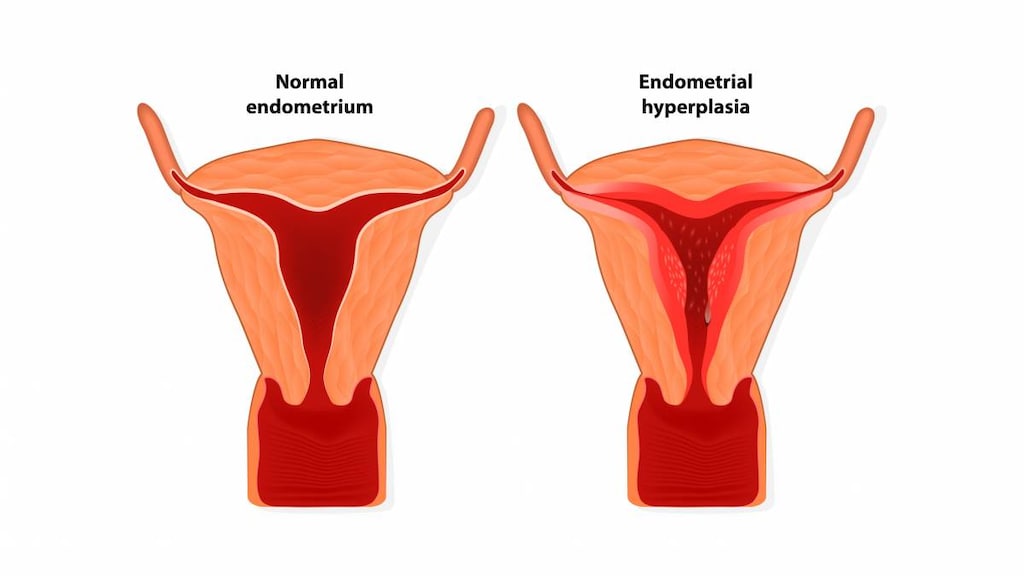
What is endometrial hyperplasia?
Endometrial hyperplasia is a condition in which the lining of the uterus (this is called the endometrium) becomes abnormally thickened. Having endometrial hyperplasia increases the risk of developing cancer of the uterus.
What causes endometrial hyperplasia?
The main cause of endometrial hyperplasia is unopposed estrogen – this means that there is an excess of estrogen in the uterus and little or no progesterone to counteract it.
In a normal menstrual cycle, estrogen released by the ovaries causes the lining of the uterus to grow and thicken to prepare the uterus for pregnancy. When an egg is released (at ovulation) levels of progesterone increase which prepares the endometrium to receive and nourish the egg. If the egg is not fertilized, estrogen and progesterone decrease. It is the decrease in progesterone that triggers menstruation, or the shedding of the endometrium.
If ovulation does not occur, progesterone is not made, and the lining is not shed. Instead, the endometrium may continue to grow in response to the excess estrogen. Some cells that make up the lining may grow and cluster together. This is called endometrial hyperplasia. Atypical endometrial hyperplasia is the term used for cells that cluster together AND grow abnormally – it is a pre-cancerous condition.
The risk of developing endometrial hyperplasia is increased in women:
- Older than 35 years
- Of Caucasian race
- After menopause, because ovulation stops and progesterone is no longer made
- Who went through menopause at an older age or who started menstruating at a young age
- During perimenopause, because ovulation may be irregular
- Taking medications that act like estrogen (such as tamoxifen)
- Who have not had a hysterectomy and are taking high-doses of estrogen
- Who are obese
- Who have never been pregnant
- With conditions such as polycystic ovary syndrome that cause irregular menstrual periods
- With a history of other conditions, such as diabetes, gallbladder or thyroid disease
- With fertility problems
- With polyps in the uterus
- With a family history of ovarian, colon, or uterine cancer
- Who smoke
What are the symptoms of endometrial hyperplasia?
The most common symptom of endometrial hyperplasia is abnormal bleeding from the vagina. The bleeding may:
- Be heavier or last longer than previous menstrual cycles
- Occur at least a year after menopause (a year since the last menstrual period)
- Occur more frequently than normal (menstrual cycles are shorter than 21 days)
How is endometrial hyperplasia diagnosed?
See your doctor if you have any type of abnormal bleeding from your vagina, or if your menstrual cycle changes. There are many causes of abnormal uterine bleeding and your doctor will ask you questions about your symptoms and may perform some diagnostic tests such as an ultrasound to measure the thickness of your endometrium.
An endometrial biopsy is the only way to tell for certain if cancer is present. This involves the removal of a small sample of tissue from the endometrium which is then examined under a microscope for cell changes.
How is endometrial hyperplasia treated?
Endometrial hyperplasia may be treated with:
- Progestin tablets, creams, injections, or intrauterine devices
- Surgery




